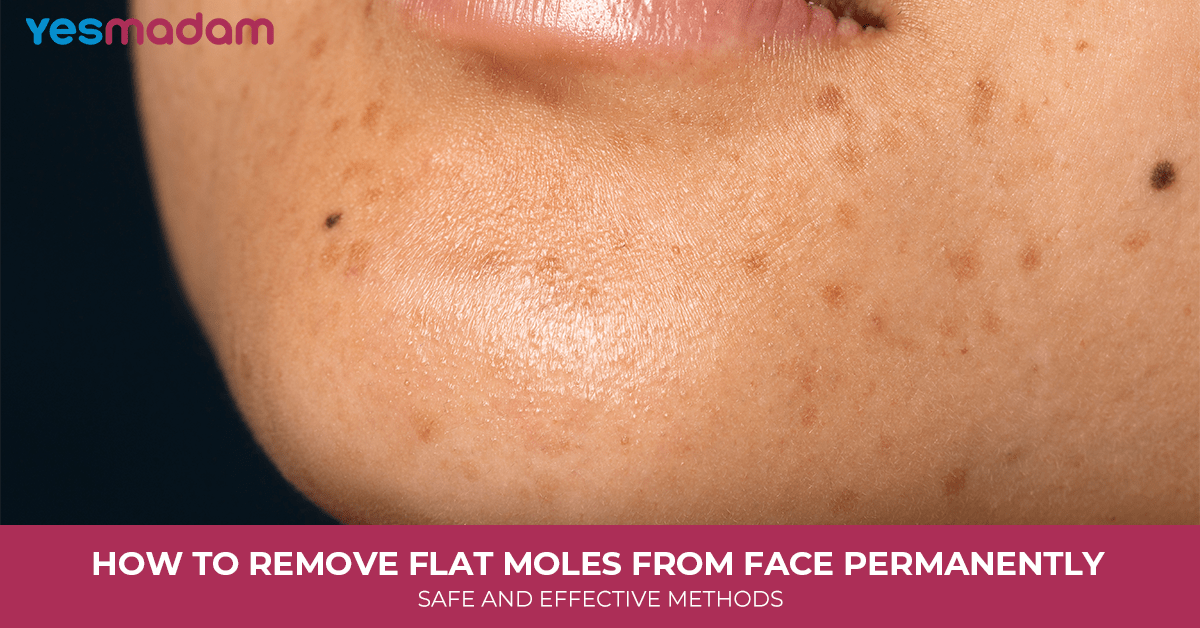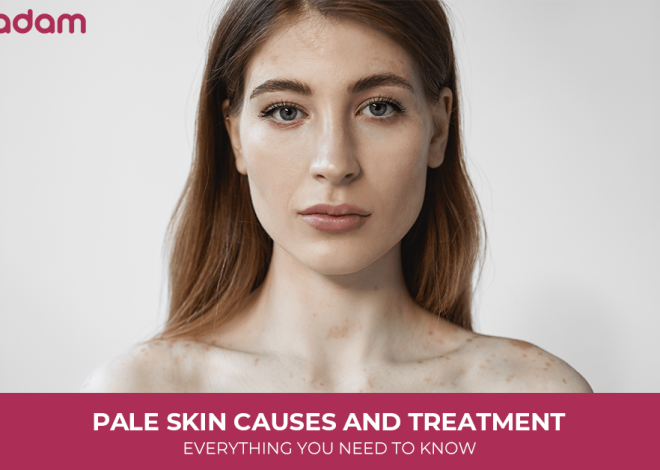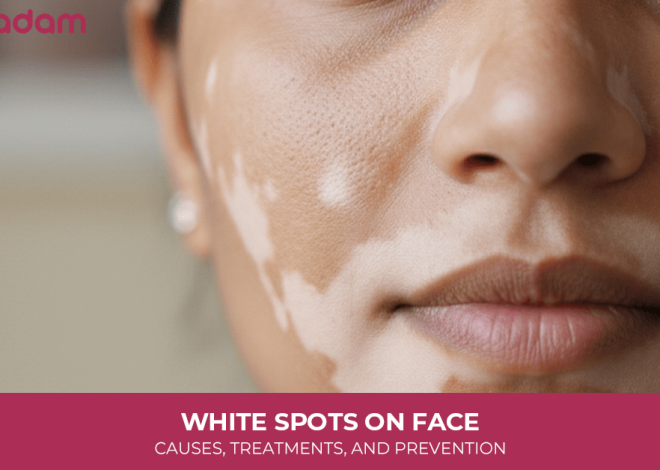
How to Remove Flat Moles From Face Permanently: Safe and Effective Methods
Have you ever noticed a flat, discoloured spot on your skin that you don’t know about? You might be noticing a flat mole. Although many people live with moles without issue, others want removal for cosmetic reasons or health concerns.
This blog on how to remove flat moles from face permanently will help you explore as well as understand your options for flat mole removal, as the first crucial step to enable you to make an informed choice about your skin health.
Table of Contents
What are Flat Moles?
Flat moles are usually non-cancerous, level with the skin discolourations, and may range in colour from dark brown or black to light pink. These moles may appear flat, round, and smooth on the skin’s surface and are caused by clusters of pigment-forming cells.
Contrary to their raised counterparts, flat moles do not protrude from the skin’s surface and are thus less noticeable by touch but still visible because of their pigmentation.
Common characteristics associated with flat moles:
- Appearance: Flush with the skin surface.
- Colour: Normally tan, brown, or black in colour.
- Shape: Oval or round in shape.
- Size: May range from tiny dots to round patches.
- Area: May appear on any part of the body, but is commonly found on sun-exposed areas.
- Origin: May be present at birth, or form over time.
More Information For You: White Spots on Face
Types of Flat Moles

Before delving into how to get rid of flat moles on face, it is important to classify the types of flat moles that will help in proper examination as the first step before any flat mole removal professional treatments:
- Benign moles: Usually, non-cancerous and harmless, these moles cause no immediate threat to your skin health and can easily undergo professional mole removal.
- Atypical moles: Have irregular shapes and may look like melanoma. Although benign, it should be monitored closely or eliminated when required.
- Cancerous moles: Such moles harbor melanoma, a kind of skin cancer that may develop within the mole tissue and adjoining skin. Melanoma is rare in flat moles, but it should still be ruled out before any removal process.
5 Reasons for Removing Flat Moles From Your Face?
Five reasons to remove flat moles from your face include cosmetic concerns, irritation or discomfort, potential health risks like skin cancer, difficulty with hygiene, like shaving, and improving self-esteem. A mole that changes in size, shape, color, or that is itchy or bleeding should be evaluated by a dermatologist for potential skin cancer.
1. Cosmetic and self-esteem concerns
- Moles can impact self-esteem if they are large or located in noticeable areas on the face.
- Removing them can boost confidence and improve appearance.
2. Irritation and discomfort
- Moles in areas prone to friction, such as near the eyes or lips, can cause discomfort.
- They can also be irritated by activities like shaving or wearing makeup.
3. Potential health concerns
- While most moles are harmless, some can be cancerous or pre-cancerous.
- If a mole shows signs of the “ABCDE” warning signs—Asymmetry, Border irregularity, Color variation, Diameter larger than ¼ inch (6mm), or Evolving (changing)—it should be checked by a dermatologist.
- Removing a suspicious mole can prevent it from spreading if it turns out to be cancerous.
4. Hygiene and shaving issues
- Moles on the face can interfere with daily routines, such as shaving, leading to nicks and irritation.
- Removing them can make daily hygiene easier and more comfortable.
5. Reducing risk of skin cancer
- An unusual or changing mole may indicate pre-cancerous changes.
- Removing a mole identified as a risk by a dermatologist can prevent the development of skin cancer.
Don’t Miss: Difference Between Blackheads and Whiteheads
A Step-by-Step Guide On Professional Flat Mole Removal Methods
Wondering how to remove flat moles from face permanently? Many professional techniques with their own advantages and disadvantages secure the top place when it comes to treating flat moles permanently. For example:
1 . Surgical excision
The technique includes cutting out the entire mole with a small margin of adjoining skin. This procedure is specifically useful for larger moles or those that require to be tested for cancer.
Pros
- Total mole removal
- Offers tissue for pathological check
- Useful for larger or suspicious moles
Cons
- Needs local anesthesia
- May leave behind a small scar
- Slightly longer recovery period
2. Shave excision
Under this, the flat mole is shaved with a surgical blade. It is effective for smaller, benign moles.
Pros
- Lesser scarring
- Faster procedure
- Less Invasive
Cons
- Chance of incomplete removal
- Not ideal for potentially cancerous moles
- Possibility of recurrence
3. Laser removal
This therapy uses a laser beam of light to break down the mole pigment. It is best for flat moles with minimal elevation.
Pros
- No cutting needed
- Suitable for multiple small moles
- Lesser scarring
Cons
- May need multiple sessions
- Not good for suspicious moles that need testing
- More costly than other methods
4. Cryotherapy (Freezing)
It includes freezing the mole using liquid nitrogen, leading the cells to die and the mole to eventually fade.
Pros
- Fast process
- Minimal pain
- Zero cutting involved
Cons
- Temporary discolouration or blistering
- Not always good for complete removal
- Not effective for testing suspicious moles
How To Remove Flat Moles From Face Naturally? Fact Vs Fiction
There are a few DIY methods for how to get rid of flat moles on face naturally, if your mole has been assessed by a dermatologist and shows no symptoms of melanoma, such as:
- Apple cider vinegar: Dab a small amount of apple cider vinegar on the flat mole using a cotton swab. Cover with a bandage and leave overnight. Repeat this daily until the mole fades.
- Aloe vera: Apply aloe vera gel to the flat mole. Let it absorb for a few hours or keep it overnight. Stay consistent with this process until you see the scar and mole fading.
- Tea tree oil: Apply a few drops of tea tree oil with a cotton swab to the flat mole and secure it with a bandage. Repeat every day until the mole fades.
- Baking soda and castor oil paste: Combine baking soda with castor oil to make a paste. Apply this to the flat mole and cover with a bandage. Keep overnight and wash the next morning.
- Pineapple juice and sea salt scrub: Mix pineapple juice and sea salt scrub to make a paste. Continue scrubbing for 15 minutes to eliminate the top layer of skin over the mole. Continue the process regularly for eventual fading.
- Banana peels: Include enzymes that may effectively eliminate moles, including flat moles.
- Garlic: Form a paste by crushing a few garlic cloves. Apply it to the flat mole, and once dried, bandage it and leave it overnight. Continue this for 1 week.
But at the same time, it is important to separate fact from fiction because, similar to professional procedures described above, these natural home remedies have their share of cons and carry significant risks, like:
- Lack of effectiveness: These home remedies lack scientific backing and do not provide long-term solutions.
- Skin damage risk: Harsh ingredients may lead to irritation or burns, causing worse skin problems.
- Misdiagnosis: Home treatments do not allow proper examination or biopsy of moles or carry the risk of overlooking skin cancer signs.
- Incomplete removal: DIY methods usually fail to eliminate the entire mole, causing uneven pigmentation or regrowth.
Making The Right Choice For Flat Mole Removal: Professional Treatments Vs Home Remedies
The choice between professional vs home treatments may depend on factors like size, type, depth, and cause of the mole, and also your skin type and medical history. Here are the key points that will help you choose the best options for flat moles:
- If you want fast, permanent, and safe results, professional treatments like laser or shave incision are your best choice.
- If your mole is harmless, small, light, and purely cosmetic, and you prefer a gentle, low-cost approach, you can try natural remedies — but manage expectations.
- Always consult a dermatologist before attempting any mole removal to ensure it’s non-cancerous.
General Recovery and Aftercare Guidelines To Follow
After mole removal, proper aftercare is important to ensure a smooth recovery and prevent complications. The following are important post-care tips:
- Keep the treated area clean: Clean the treated area gently using mild soap and water. Refrain from scrubbing as this may irritate the wound.
- Follow-up visits: Do schedule follow-up appointments with your dermatologist to keep track of the healing process.
- Use prescribed ointments: Use the prescribed ointments to hasten healing and prevent infection.
- Sun protection: Protect the treated area from direct sunlight by applying a broad-spectrum sunscreen with SPF of at least 30 to prevent scarring risks.
- Avoid picking: Refrain from picking at scabs, as this may further aggravate scarring and put a hindrance to the healing process.
Conclusion
To conclude, the answer to how to remove flat moles from face permanently is a complex one. The whole thing needs careful consideration and also professional guidance for achieving lasting results. Whether you opt for professional treatments or DIY methods, consulting with your dermatologist helps determine the best course of action for your specific mole situation.
FAQs
How to remove mole from face permanently?
Removing a mole from your face permanently depends on the type of mole (flat or raised), its depth, and whether it’s benign or suspicious. The best and safest approach is always to consult a dermatologist before attempting removal.
How to remove small moles from face?
Small moles on the face are common and usually harmless, but if you find them bothersome or want smoother, clearer skin, there are several safe ways to remove them. The key is to choose an effective method that is scar-free and dermatologist-approved.
Can flat moles be removed permanently?
Yes, flat moles can be removed permanently using professional treatments like laser removal or surgical excision. Home remedies may lighten them, but usually don’t remove them completely.
What is the safest method to remove flat moles from the face?
Laser removal and shave incision are the safest options for facial moles. They are precise, minimally invasive, and reduce the risk of scarring.
How long does it take to remove a flat mole permanently?
With professional treatments, most flat moles can be removed in one to three sessions, depending on size and depth. Healing usually takes 7–14 days.
Will mole removal leave a scar?
Modern techniques like laser or radiofrequency generally leave minimal to no scarring. Surgical excision may leave a small, fading scar, but it’s usually not noticeable on the face.
Is mole removal painful?
Most professional treatments are pain-free or cause only mild discomfort. Local anesthesia is used during surgical excision to ensure comfort.
Can flat moles grow back after removal?
If removed completely with laser or surgical excision, moles usually do not grow back. Incomplete removal may lead to regrowth, so professional treatment is recommended.
Can laser mole removal be done on all skin types?
Yes, modern lasers are safe for most skin types, but your dermatologist will select the appropriate laser to minimize the risks of pigmentation changes.
Should I consult a dermatologist before removing a flat mole?
Absolutely. A dermatologist will examine the mole to ensure it’s benign and recommend the best permanent removal method. Some moles may need a biopsy to rule out skin cancer.



